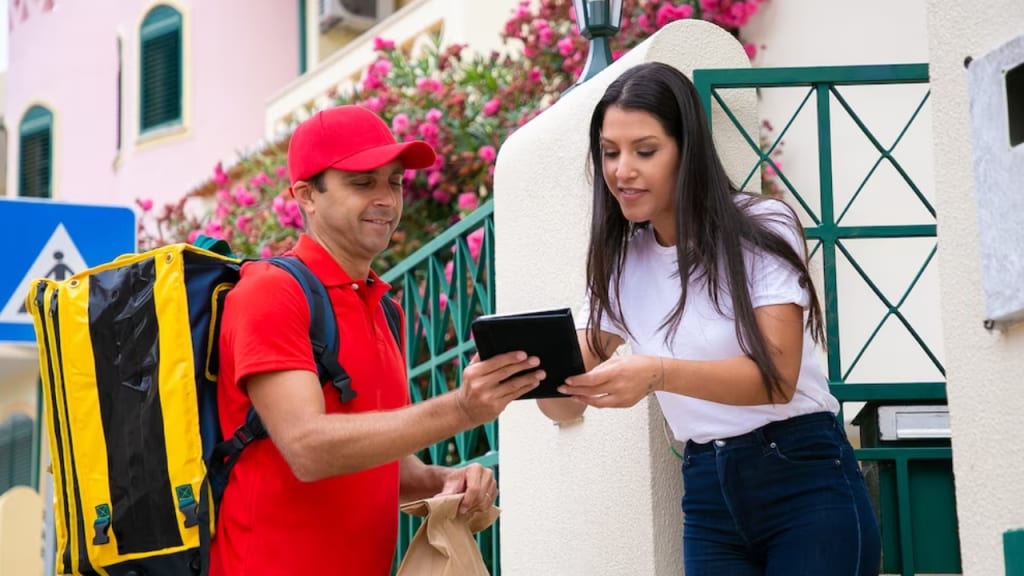Understanding the Basics of the Hyperlocal Delivery Model and Its Working
Hyperlocal Delivery Model

Online Hyperlocal markets have been successful in satisfying consumer demand both during and after Covid. These were the go-to option for the majority because of their rapid deliveries. Due to their convenience and ability to save customers' time, they have maintained a continuous demand up until this point.
The rise in "Near Me" searches, has further enhanced the popularity of hyperlocal eCommerce marketplaces. Hyperlocal grocery delivery solutions have become a popular buzzword in the eCommerce business.
Definition
The term "hyperlocal delivery model" refers to a delivery method with precise time and geographic restrictions. Local vendors find it challenging to survive in this digital age; but, with a hyperlocal delivery strategy, local shops have a chance to stay afloat in the industry. Hyperlocal delivery is acting like a boon for grocery delivery businesses.
Benefits- Why Choose the Hyperlocal Delivery Model?
Time, demand, and execution are three key components of the hyperlocal delivery model. Outlined below are some of the benefits of the hyperlocal delivery model:
1. Global Potential
The hyperlocal grocery market is expected to reach US$ 81.5 Bn by 2032. There has been significant growth in hyperlocal deliveries in the last three years. The uptick of hyperlocal deliveries is not specified to any particular market, it is a globally growing model.
2. Low Investment
Low-cost investment is one of the most profitable justifications for embracing hyperlocal delivery. Having warehousing facilities, hiring pricey long-distance providers, setting up hub facilities for distribution, and investing in a sizable pool of delivery executives are not necessary under this type of delivery strategy. As a result, the initial cost needed to launch hyperlocal grocery delivery is drastically reduced.
3. Transparency
Hyperlocal deliveries outperform conventional delivery models in terms of customer transparency. Customers using hyperlocal grocery delivery services are informed of the location from which the delivery representative will pick up their items. The likelihood is that the consumer who placed the order has frequented that shop. These elements engender satisfaction and trust right away.
4. Boon for Local Vendors
Since the market is getting more competitive due to globalization and small firms are losing ground in the race, the hyperlocal grocery delivery model benefits local suppliers, unlike other delivery formats. Hyperlocal grocery delivery accelerates the growth of the local economy.
5. Technological Availability
Nowadays, technology is not a barrier to progress because digital logistics tools are evolving quickly. Businesses must use cutting-edge technologies to carry out hyperlocal delivery. Automation empowers businesses to seamlessly execute tasks and schedule delivery, thus making hyperlocal grocery delivery business operations hassle-free.
Business Model- How does the Hyperlocal Delivery Model work?
The hyperlocal delivery business model is based on collaboration between logistics providers and local vendors. Customers place orders through the company's mobile application or website. As the vendor receives and packs orders, a delivery agent picks them up and delivers them to the consumer. FMGC- Fast Moving Consumer Goods, uses the hyperlocal business model mostly for fast food, grocery, and medicine.
The Hyperlocal delivery model operates on below mentioned types:
1. Inventory-led Model
Businesses own the inventories under the inventory-led approach. They either manufacture the products or buy them from retailers, then keep them in the warehouse. When they get the order, they either contact the delivery agents or have an in-house delivery crew. The inventory-led methodology can be costly and challenging to administer.
2. Aggregator Model
Aggregator model is a no-inventory-based model. The business with the aggregator model acts as an intermediary between consumers and merchants. The aggregator gets in touch with the provider and proposes to establish a partnership. Customers use the aggregator's platform to make purchases after being enticed by its advertisements. Partners acquire clients, and the aggregator earns a commission.
3. Hybrid Model
The Hybrid model combines inventory-led and aggregator approaches. This approach enables in-store pickup and delivery based on preferences.
4. BOPIS
Buy online, pay in-store allows the buyer to place an order digitally and pick it up at their convenience, eliminating the need to wait in large lines to have the purchase packed.
How to build your own Hyperlocal Delivery Business?
To build a hyperlocal delivery business some aspects need to be addressed. Below mentioned are some of the areas you need to consider for setting up your delivery network:
1. The first and most important step in starting a hyperlocal delivery service is to identify what products you want to deliver.
2. Analyze the target market and market trends in conjunction with the product decision.
3. Once you have gathered enough information from market research, you must choose and collaborate with local vendors.
4. Choose the Revenue Model
5. Launching a hyperlocal grocery delivery platform requires robust software
6. You need Logistics Partners that will handle the shipping on behalf of the Seller and deliver the items in accordance with the order placed on the Aggregator's website.
Our Recommendation- Growcer
Demand for hyperlocal grocery delivery systems is increasing as the working population and the grocery industry grow. Customers are provided with groceries at their doorstep owing to the hyperlocal service market's agile and customized delivery alternatives. Growcer is a grocery delivery marketplace solution which helps to build a platform that provides the delivery of groceries with a shorter shelf life according to the chosen slot. It supports both in-store pickup and delivery. Growcer is a highly scalable and adaptable hyperlocal grocery eCommerce marketplace software. It assists you in locating nearby goods and merchants and coming to a wise selection. Growcer comes with a lifetime license at a one-time cost. And for further assistance, Growcer has a year free of technical support and free installation.
Conclusion
The hyperlocal delivery business has become very competitive, however, one thing is unanimously acknowledged: it has altered the world of Internet commerce and provides significant benefits to local businesses.
For more information, contact us.
About the Creator
Harjinder Singh
3+ years of exeperience in Digital Marketing.
Enjoyed the story? Support the Creator.
Subscribe for free to receive all their stories in your feed. You could also pledge your support or give them a one-off tip, letting them know you appreciate their work.






Comments
There are no comments for this story
Be the first to respond and start the conversation.